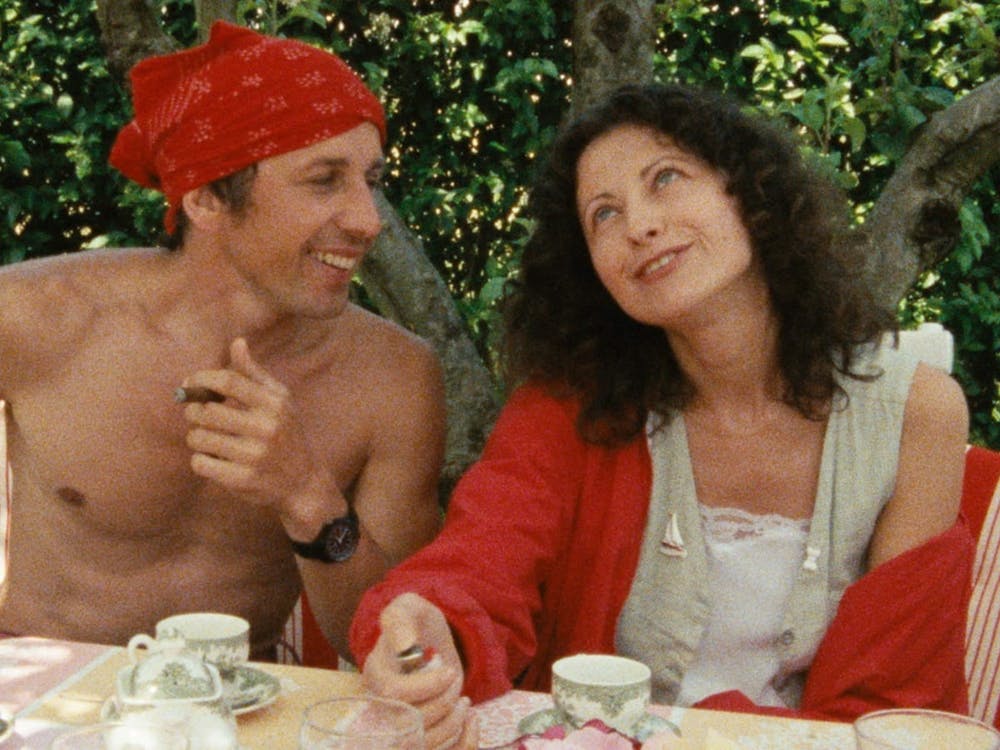It happens rarely, only if the conditions are perfect. The moment the upper rim of the sun dips below the horizon, a green beam shoots up into the sky. The beam lasts one or two seconds before it dims and disappears, leaving dusk to its ritual darkening.
I didn’t know about this optical phenomenon until I watched Éric Rohmer’s 1986 film “Le Rayon Vert” (“The Green Ray”). When I watched the French-language film a second time this summer, I realized distressingly that I, like the film’s troubled protagonist Delphine, was locked in stasis, waiting for a God-sent green ray to shine life into my listless days.
In June, despite all my hopes for a summer in quarantine — speaking French! reading classic books! getting in shape! — I found myself chained to the sectional sofa in my living room, scrolling through a vacuous stream of TikToks, my face paler and my intellect frailer than I had imagined. Quarantine intensified the ennui that often accompanies long breaks. I had a yearning for something more, but the details of the something in question, and the energy to accomplish it, escaped my reach.
Delphine struggles similarly in “Le Rayon Vert.” Recovering from a breakup, she faces a summer vacation that, like the streets of fashionable Paris quartiers in August, extends empty before her. Her friends try to console her: They offer to lodge her in Spain and Ireland, in family homes and rented apartments, but she tosses her head tiredly at every prospect. When she accompanies a family to their ivy-draped home in Cherbourg, where children hang from her neck and days unfold idly under the sun, you feel she must be happier.
Instead, after sauntering through windswept foliage on a sea-side bluff, Delphine leans against a wooden fence, looks up at the sky and cries.
Delphine keeps crying as she travels alone from one vacation spot to the next in search of something she cannot name. She knows what it is not: It is not solitude, nor is it the men who slink up to her. Nothing and no one quells her restlessness. “If people don’t approach me, it’s because that’s just how I am,” Delphine says to a concerned woman who tries to befriend her in Biarritz. Her words spill out in hesitant fragments as tears stream down her cheeks. “It’s because I’m worthless.”
Delphine’s complaints and self-deprecations confuse those around her. (“You’re a plant!” taunts a dinner party host.) But Rohmer’s camera lingers lovingly on her sheepish smiles, her stumbling, self-searching monologues and the moments when her limp figure settles into florid backdrops like she’s the muse of a Romantic painter vaulted into the 1980s.
The color green follows Delphine — a green flyer, a green card, a “green ray”-themed store — and her friend says it’s a sign of hope. When she walks beside a craggy shore in Biarritz, Delphine overhears older women discussing a minor Jules Verne novel titled “The Green Ray.” Verne, they say, wrote that the green ray gifts its spectators with a moment of heightened perception — the kind that affirms love and begets peace.
When I drove on a June evening to my old hometown, to meet my friends and watch a sunset from atop a parking garage, I wasn’t thinking about Delphine or the green ray. I was driving because a Saharan dust plume — the great Saharan dust plume, as the media coined it — had traveled across the Atlantic Ocean to drift over the southern United States. I had heard that the sunsets, filtered through these atmospheric dust particles, would be especially spectacular.
I sat on the concrete atop the parking garage that evening, intermittently thrusting my phone in the air to capture every change in the sky, every subtle deepening of orange and darkening of blue (many pictures I will someday delete in a coldhearted camera roll purge). The sky was clear save for a few wispy cirrus clouds. The sun dipped below the trees and disappeared, and hazy embers above the treetops expanded and burst into the blue. Hues came and went; lavender, then pink, then, wedged in the middle of it all, an emerald glow.
“The Green Ray” concludes with a sunset. Delphine sits on a cliff beside a man who, for once, didn’t repel her when they met. She awaits the elusive green ray to tell her whether their love is true. As the sun nears the horizon, she cries. The upper rim vanishes and… Voila! A flash of green, gone in seconds. Delphine grins.
My great Saharan dust plume sunset didn’t produce a green ray. Instead, I got a large, amorphous blob of faint green. Where Delphine grinned in ecstasy, the edges of my mouth barely curved upward.
Still, “The Green Ray” comforts me in its depiction of the calm that surrounds sadness. If I step outside of myself and see the painting I’m a part of — the beauty that surrounds me, like that which surrounded Delphine, even during my most potent periods of self-pity — I can see the green following me, the bits of hope that don’t foretell a revelation like the one in a romance film but instead offer small tastes of that big, imagined fairytale reveal. While last summer may have included some of the lowest moments of my life, what I now remember most clearly from those interminable five months in quarantine is the sunset of that great Saharan dust plume and the evenings I spent sitting on my front porch, watching twilight slowly descend upon treetops and powerlines until all was dark and cool and I felt a momentary, if not quite revelatory, peace.
I’ve never witnessed a green ray, but for now, I think I’m content to linger in the middle of the film of my life.
Get The Chronicle straight to your inbox
Signup for our weekly newsletter. Cancel at any time.

